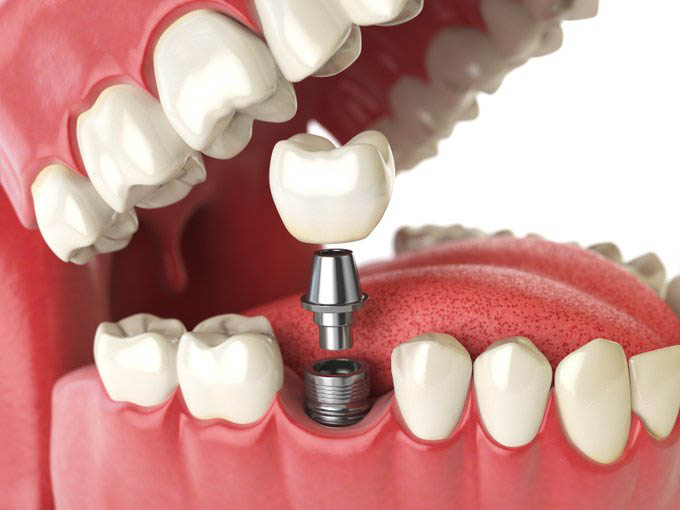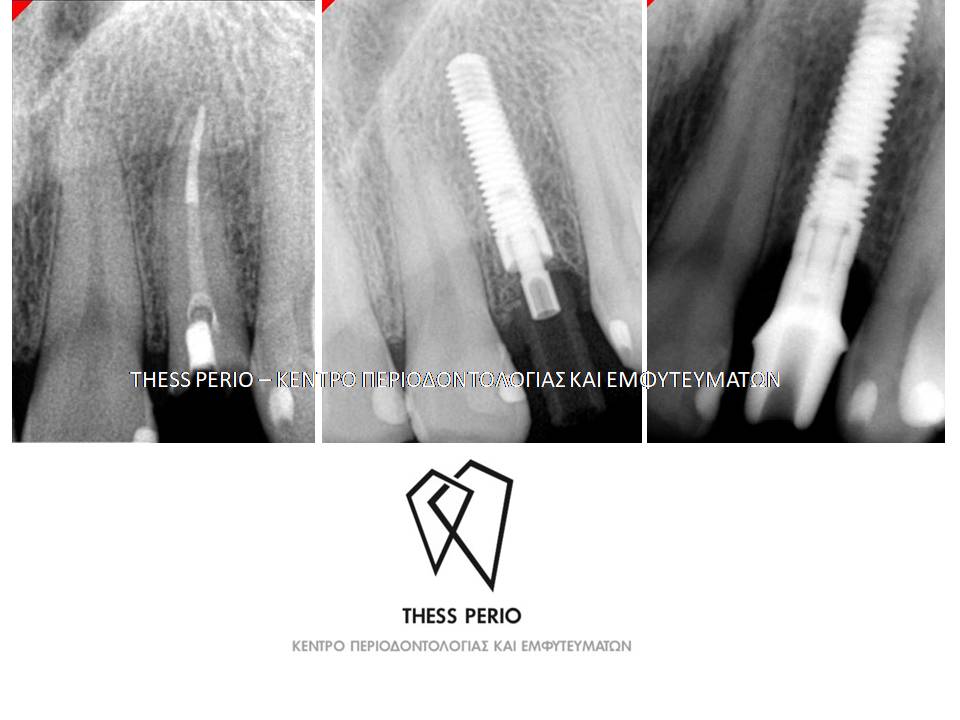- Home
- Dental Implants
DENTAL IMPLANTS
The dental implant is an artificial tooth root that is placed in the jaw bone in order to retain a crown, a bridge or a denture. Dental implants are a viable option for patients that have lost a tooth or teeth due to periodontal disease, trauma, decay or other reasons. Implants are predominantly made of titanium, a biocompatible material that offers resilience and integrates with the bone, a process termed osseointegration.
Dental implants are fixed prostheses that allow patients to eat and laugh, as they mimic the appearance of natural teeth. They can be used when:
- A single tooth is missing – instead of a bridge
- Multiple teeth are missing – instead of bridges or partial dentures
- All teeth are missing – instead of dentures
How much healing time do dental implants need? Generally, dental implants require 3 to 4 months of healing, following their surgical placement. The healing time depends on the quality of bone, the patient’s medical history and is often prolonged when the performance of supplementary treatments, such as bone or gum grafts, is needed.

STAGES OF TREATMENT
- Initial examination for the assessment of needs and therapeutic options
- Surgical placement of the dental implant in the jaw bone and under the gums
- Exposure of the dental implant a few months later, assessment of the osseointegration and preparation for the prosthetic rehabilitation
- Prosthetic rehabilitation
- Re-evaluation
ADVANTAGES
Dental implants look and feel like natural teeth and with the appropriate care can serve as a long-term solution for the replacement of lost teeth. The advantages of dental implants are:
- Appearance: dental implants look alike your natural teeth, no one will ever know you have a dental implant
- Reliable: dental implants’ success rates are high, especially when placed by a periodontist. With meticulous oral hygiene and regular recalls, a dental implant can last for many years
- Confidence: because dental implants are osseointegrated in the jaw bone, they serve as natural teeth allowing you to smile with confidence, talk and eat as normal
- Improved oral health: because the neighboring teeth are not affected by dental implants, the long term oral health is not jeopardized
- Prevention of the bone loss naturally occurring when a tooth is lost
- Maintenance of the position of neighboring teeth. Dental implants support the neighboring teeth and prevent their migration, maintaining the temportomandibular system in balance
- Maintenance of the face anatomy. Tooth loss and the subsequent bone loss causes changes in the face anatomy, reducing the vertical dimension of the face and leading to the appearance of wrinkles around the mouth. Dental implants can help maintain the facial anatomy.
IMMEDIATE IMPLANT PLACEMENT FOLLOWING A TOOTH EXTRACTION
Teeth replacement using dental implants has proven to be a successful and predictable treatment procedure. Immediate placement of a dental implant in an extraction socket can achieve quicker and easier surgical treatment times. Reductions in the number of surgical interventions, a shorter treatment time, an ideal three dimensional implant positioning, the presumptive preservation of alveolar bone at the side of the tooth extraction and soft tissue aesthetics.

